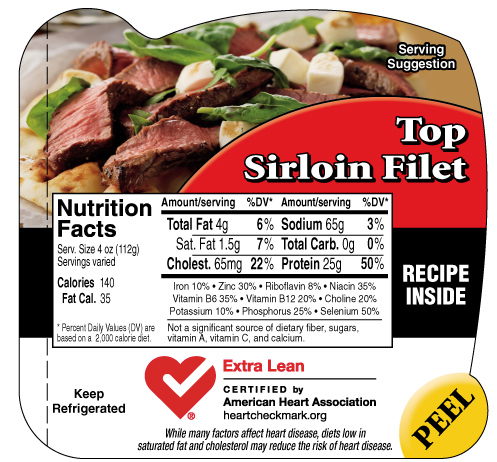American Heart Association says “I ♥ beef”!
The Beef Board, the USDA-managed checkoff program for marketing beef, proudly announces its new partnership with the American Heart Association (AHA). The Beef Board gets its money from a compulsory tax on cattle ranchers computed every time they sell an animal. Evidently, the money is well spent.
The AHA will put its HeartCheck symbol on three cuts of lean beef:
- Boneless Top Sirloin Petite Roast (select grade)
- Top Sirloin Filet (select grade)
- Top Sirloin Kabob (select grade)
A member of the Beef Board says: “”We are extremely thrilled to receive the American Heart Association certification because, for consumers, it represents the independent voice of a trusted health organization.”
I’ll bet they are.
Today’s quiz: How much money is the Beef Board paying the AHA to use its CheckMark logo?
I hope it’s a lot more than what the AHA gets (or used to get) for putting its check mark on sugary cereals. This was $4,500 per product when I updated Food Politics in 2007. After all, sugary cereals don’t have any saturated fat or cholesterol so they must be heart healthy, no?
Ah partnerships and alliances. You have to love them. How will the Beef Board use the HeartCheck? With an I ♥ Beef campaign, of course. Fat content unspecified.





